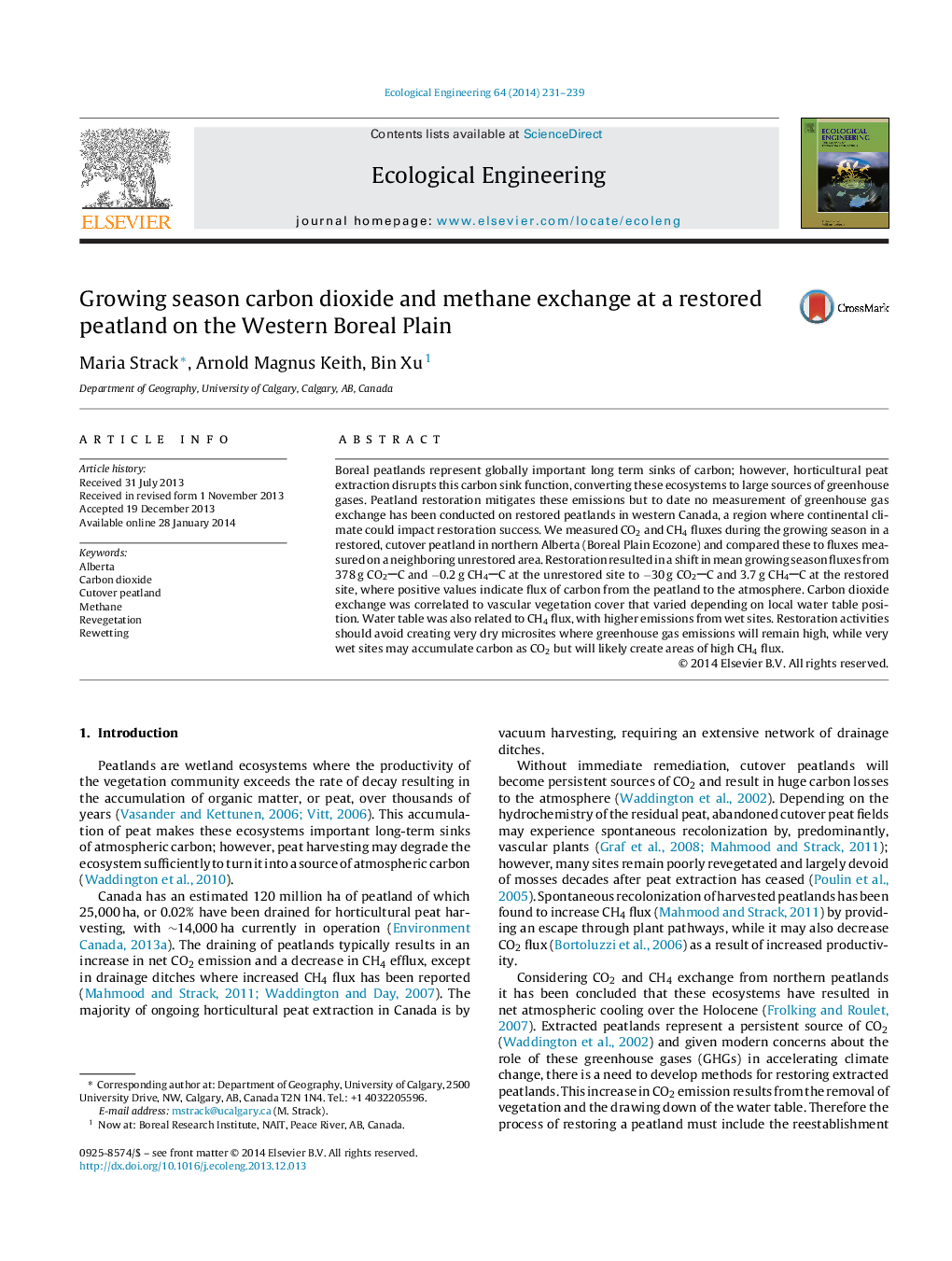| Article ID | Journal | Published Year | Pages | File Type |
|---|---|---|---|---|
| 4389583 | Ecological Engineering | 2014 | 9 Pages |
•We investigated greenhouse gas exchange in a restored cutover peatland in Boreal, Alberta, Canada.•Three year post restoration, on average restored plots were growing season sinks for carbon.•Plant community on site consisted largely of spontaneously recolonizing species.•CO2 flux will likely remain high from dry microsites.•Wet microsites may be growing season sinks for CO2 but will likely be large sources of CH4.
Boreal peatlands represent globally important long term sinks of carbon; however, horticultural peat extraction disrupts this carbon sink function, converting these ecosystems to large sources of greenhouse gases. Peatland restoration mitigates these emissions but to date no measurement of greenhouse gas exchange has been conducted on restored peatlands in western Canada, a region where continental climate could impact restoration success. We measured CO2 and CH4 fluxes during the growing season in a restored, cutover peatland in northern Alberta (Boreal Plain Ecozone) and compared these to fluxes measured on a neighboring unrestored area. Restoration resulted in a shift in mean growing season fluxes from 378 g CO2C and −0.2 g CH4C at the unrestored site to −30 g CO2C and 3.7 g CH4C at the restored site, where positive values indicate flux of carbon from the peatland to the atmosphere. Carbon dioxide exchange was correlated to vascular vegetation cover that varied depending on local water table position. Water table was also related to CH4 flux, with higher emissions from wet sites. Restoration activities should avoid creating very dry microsites where greenhouse gas emissions will remain high, while very wet sites may accumulate carbon as CO2 but will likely create areas of high CH4 flux.
